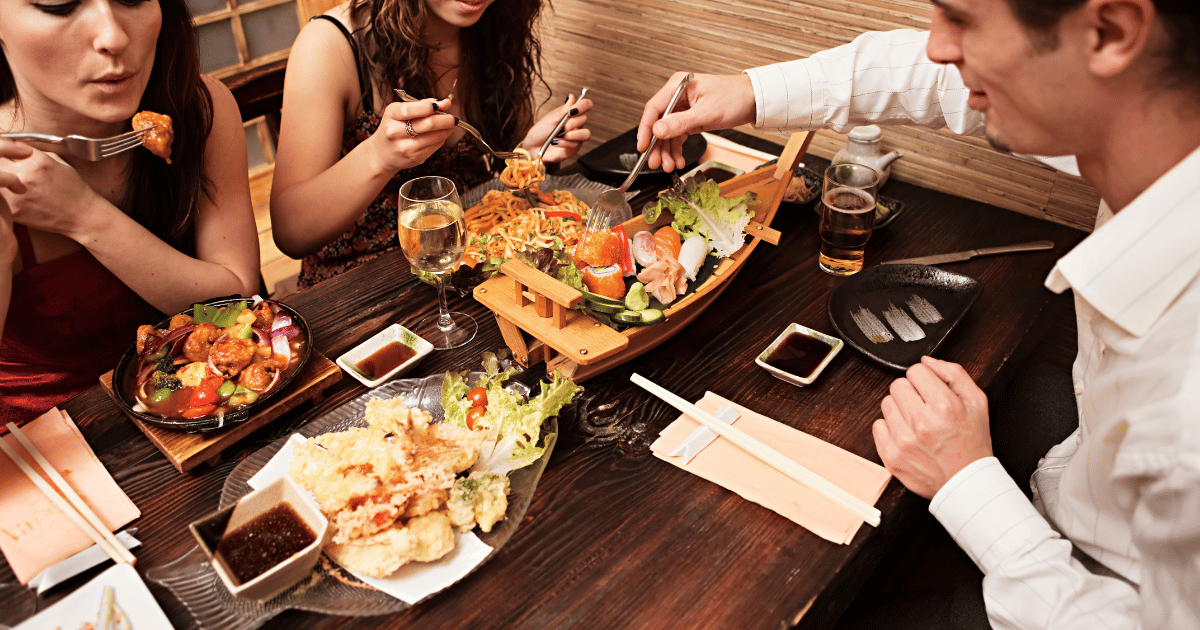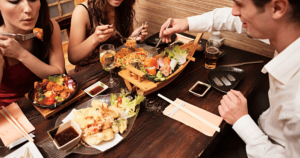When you’re in Japan, one of the highlights you definitely won’t want to miss is indulging in Japanese cuisine. From sushi and yakiniku to ramen and homestyle dishes, the flavors that Japan has to offer are uniquely its own. To truly savor your dining experience, it’s essential to be mindful of dining etiquette. What might be acceptable in your home country could be considered quite different in Japan. In this article, I’m here to introduce you to some vital dining etiquette tips to bear in mind whether you’re dining at Japanese restaurants or in the comfort of a Japanese home. So let’s dive in and ensure you’re not feeling lost when dining out.
1. Use Oshibori Only for Hand Wiping: Upon entering most Japanese restaurants, you’ll be handed an oshibori (wet towel). Regardless of whether it’s a disposable paper oshibori or a reusable cloth version, its sole purpose is for cleaning your hands. Especially when using a cloth oshibori, remember to refrain from using it to wipe your face, mouth, or any other surfaces apart from your hands.
2. Mastering Chopstick Etiquette: Unlike knives, forks, and spoons that serve singular functions like cutting, spearing, or scooping, chopsticks operate as a pair with a dozen distinct functions: pinching, gripping, pressing, scooping, tearing, placing, peeling, untangling, wrapping, cutting, transporting, and mixing. From how to hold them to their usage during a meal, a multitude of rules exist to ensure harmonious dining. While there are nearly 40 things to avoid doing with chopsticks, I’ll cover the top 5 common taboos often mistaken by foreigners.
- Don’t rub your chopsticks together: While this is useful to avoid splinters from wooden “waribashi,” it’s actually considered impolite in Japan.
- Avoid sticking chopsticks upright in rice (Tate Bashi): This should only be done during funeral rituals.
- Don’t pass food using chopsticks (Hashi Watashi): This is akin to a ritual involving the deceased’s remains and is avoided at dining tables.
- Avoid pointing or waving with chopsticks (Sashi Bashi, Furiage Bashi): Pointing is considered rude, and waving them while talking is impolite.
- Don’t use the other end of the chopsticks to serve from Large Plates: This is seen as inappropriate behavior due to hygiene concerns. Proper etiquette suggests using dedicated serving chopsticks provided by the restaurant or host.
3. Mindful Slurping: In Japan, it’s actually polite to slurp noodles, especially when enjoying dishes like ramen or udon. This not only cools down the hot noodles but also enhances the flavor by allowing air to mix with the broth. So don’t hesitate to make some noise while slurping—you’re actually showing your appreciation for the meal! However, it’s important to note that if you’re not comfortable with slurping, you’re not obligated to do so. Many Japanese individuals also choose not to slurp in public, and that’s perfectly acceptable.
4. Holding Small Plates and Bowls: When served traditional Japanese or set meals, like a rice bowl and miso soup, holding these bowls in your hands is considered proper etiquette. Opt for bowls you can lift with one hand, such as small donburi bowls, plates, or smaller bowls. For larger bowls, it’s more graceful to support the bowl with your hand.
5. Avoid Resting Elbows on the Table: Resting your elbows on the table is considered impolite and can disrupt others around you. Keep your arms lifted while eating and rest the non-chopstick hand on the table or beside your dish.
6. Finish Your Meal: Order what you can finish. In Japan, finishing your food is a gesture of gratitude towards those who prepared the meal and the ingredients. If you have dietary restrictions, inform the server when placing your order. If you can’t finish your meal due to being full, don’t force yourself—it’s acceptable. Express gratitude to the staff as you leave.
7. No Tipping: Tipping isn’t customary in Japan. Instead, payments are placed in a provided tray. Your change will likewise be placed in this tray.
Understanding Japanese dining etiquette is about showing respect and consideration for others while eating. While there are do’s and don’ts, don’t worry too much about minor things. The ultimate aim is to enjoy a delicious meal with friends and family while keeping everyone’s comfort in mind.



COMMENTS
コメント一覧 (1件)
Wonderful, what a web site it is! This weblog provides valuable facts
to us, keep it up.